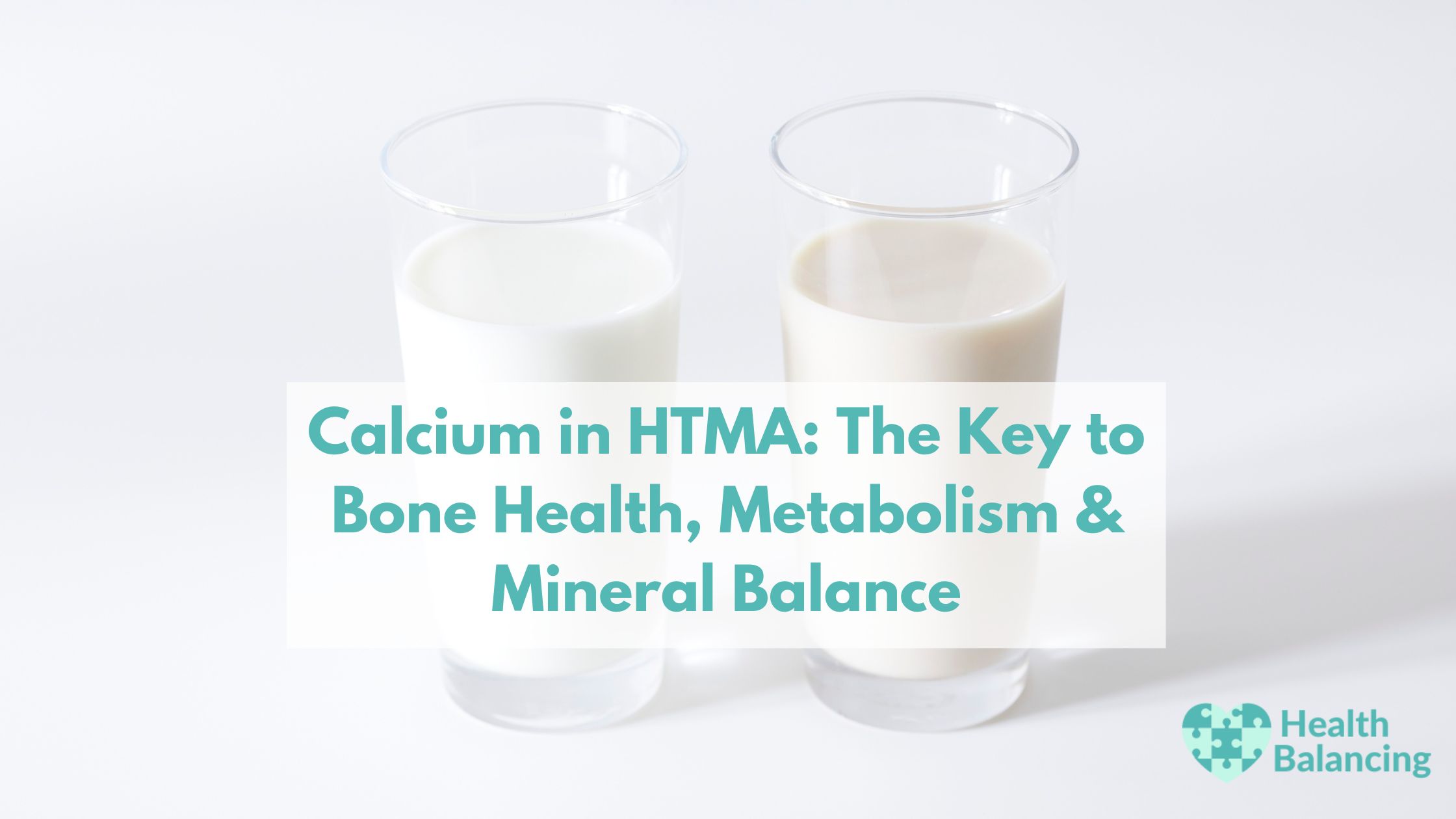Calcium is one of the most crucial minerals in the body, playing essential roles in bone health, cellular function, and metabolic processes. Hair Tissue Mineral Analysis (HTMA) provides insights into calcium levels, helping to determine metabolic type, potential deficiencies, and mineral imbalances that may affect overall health. In this article, we’ll explore the significance of calcium in HTMA, its functions, dietary sources, and how it relates to oxidation rate.
The Role of Calcium in the Body
Approximately 99% of calcium is found in bones, but it also plays several other critical roles, including:
- Cell Membrane Regulation: Calcium influences cell permeability, muscle contraction, and nerve impulse conduction.
- Body Fluid Balance: It regulates blood clotting and maintains pH balance.
- Hormone Secretion: It is involved in insulin production and other hormonal processes.
- Metabolism and Detoxification: Calcium is essential for phosphorus metabolism, energy production (Krebs cycle), and heavy metal detoxification, particularly for lead and cadmium.
Calcium and Oxidation Rate in HTMA
Oxidation rate refers to how efficiently the body converts nutrients into energy. Calcium levels in HTMA are closely linked to oxidation rate, influencing metabolic function and overall health.
Fast Oxidation and Low Calcium
In fast oxidation (the alarm stage of stress), excessive thyroid and adrenal gland activity increases sodium and potassium levels. These minerals dissolve calcium from tissues and the blood, leading to low hair calcium levels. Individuals in fast oxidation often experience:
- Increased metabolic rate
- High energy levels, followed by crashes
- Increased irritability and anxiety
- A tendency toward osteoporosis due to calcium depletion
Low hair calcium in fast oxidizers indicates rapid calcium loss through urine, often associated with a copper deficiency. Adequate calcium intake through diet or supplementation may be necessary to balance mineral ratios.
Slow Oxidation and High Calcium
In slow oxidation, metabolism is sluggish due to underactive thyroid and adrenal glands. Hair calcium is typically elevated and always high relative to sodium and potassium. This occurs because the body cannot properly utilize calcium, causing it to precipitate into soft tissues. Biounavailable calcium can contribute to:
- Arterial calcification
- Joint stiffness and arthritis
- Kidney stones
- Brain fog and cognitive issues
High calcium levels in HTMA can also indicate hidden copper toxicity. Over time, excess calcium accumulation may lead to structural imbalances in the body.
Dietary Sources of Calcium
Ensuring proper calcium intake from whole foods is essential for maintaining balance and preventing deficiencies. The best dietary sources include:
- Seafood: Sardines, caviar, smelt
- Animal Products: Egg yolks
- Nuts & Seeds: Almonds, sesame seeds, filberts
- Vegetables: Kale, collard greens, mustard greens, turnip greens
- Dairy: Cheese, milk
- Other Sources: Molasses, kelp, brewer’s yeast, torula yeast
Balancing Calcium with Other Nutrients
Calcium does not function alone—it requires synergistic nutrients for proper absorption and utilization:
- Enhancing Absorption: Vitamin A, vitamin D, stomach acidity, and adequate protein intake.
- Utilization Support: Magnesium, copper, and vitamin C.
- Antagonistic Factors: Excess phosphorus, fluoride, lead, cadmium, sodium, and potassium can interfere with calcium metabolism. High protein intake may also increase calcium loss through urine.
Calcium Supplementation and HTMA Considerations
Supplementing with calcium can be beneficial in certain cases, particularly for:
- Slowing the oxidation rate in fast oxidizers.
- Detoxifying heavy metals like lead and cadmium.
- Balancing key mineral ratios to support overall metabolic health.
However, excessive calcium supplementation in slow oxidizers can exacerbate biounavailable calcium buildup, worsening symptoms like joint calcification and arterial stiffness.
Conclusion
Calcium is a fundamental mineral that plays diverse roles in metabolic function, bone health, and detoxification. HTMA provides valuable insights into calcium status, helping to identify oxidation rate and potential mineral imbalances. Whether dealing with low calcium in fast oxidation or high, biounavailable calcium in slow oxidation, addressing calcium balance through diet, lifestyle changes, and strategic supplementation is key to optimizing health. Understanding your HTMA results allows for targeted interventions that support long-term well-being and metabolic harmony.

